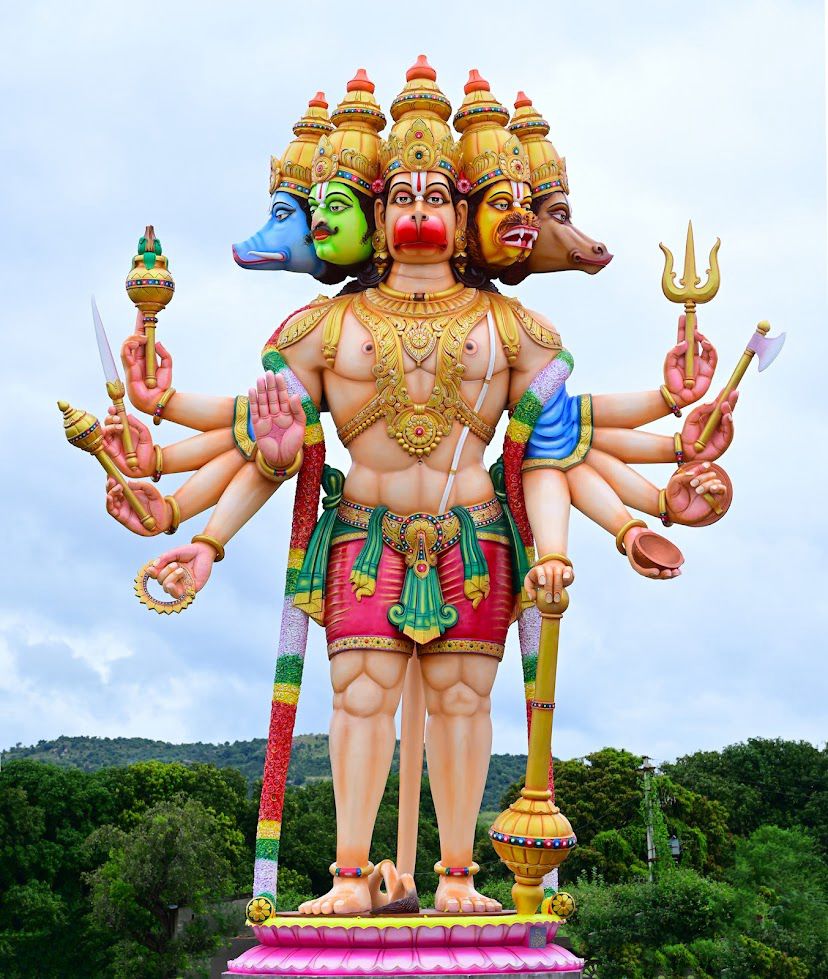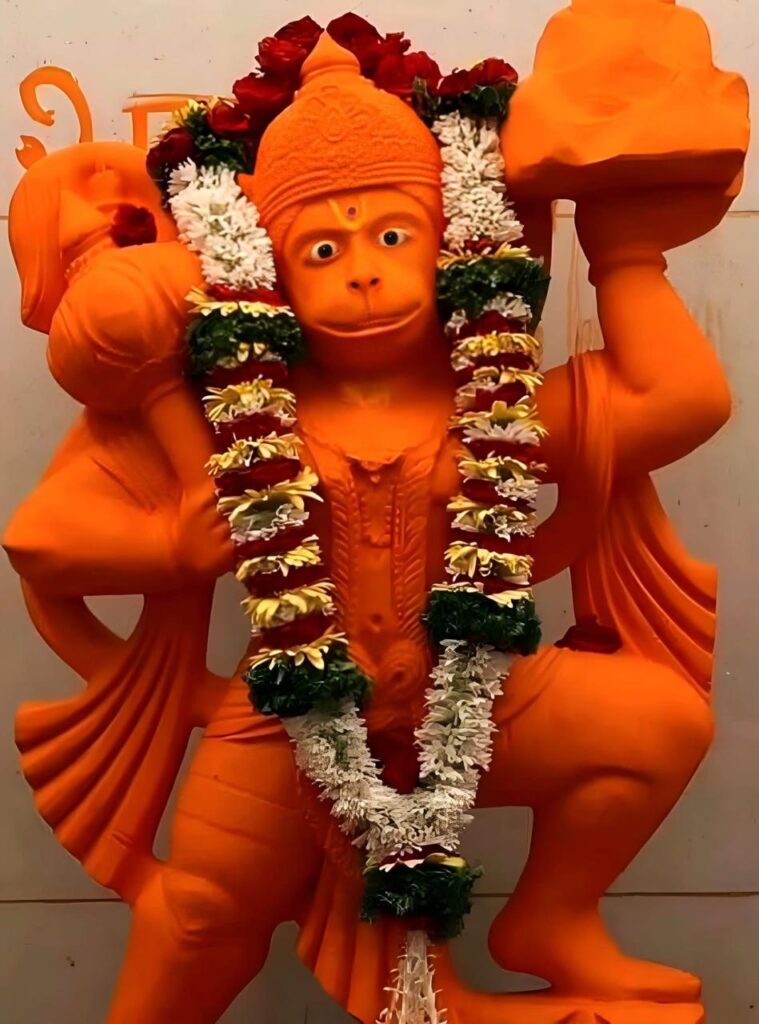
Jay Shri Hanuman
By Lokanath Mishra
Hanuman’s birth is attributed to the divine intervention of Lord Shiva and Vayu, the wind god. According to the Valmiki Ramayana, Anjana, Hanuman’s mother, performed intense prayers for twelve years to Shiva, seeking a child. Pleased with her devotion, Shiva granted her the son she sought.

Another legend from Eknath’s Bhavartha Ramayana tells a different story. It states that King Dasharatha of Ayodhya performed the Putrakameshti ritual to have children. As a result, he received payasam, which was shared among his three wives, leading to the births of Rama, Lakshmana, Bharata, and Shatrughna. A kite snatched a fragment of the payasam and dropped it in the forest where Anjana was worshiping. Vayu delivered the pudding to Anjana’s hands, and she consumed it, resulting in Hanuman’s birth.

Hanuman is worshipped as a deity with the power to vanquish evil and provide protection. Devotees celebrate him and seek his blessings, often visiting temples and reading Hindu texts like the Hanuman Chalisa and Ramayana. They apply vermillion to their foreheads from Hanuman’s murti, following a legend where Hanuman smears his body with vermillion to ensure Rama’s immortality. Chanting Hanuman’s mantras and meditating on him is believed to bring blessings, eliminate troubles, and lead to miracles.
Today: As the sun rose over Puri, its warm rays illuminated the ancient temples and vibrant streets. Today marked Pana Sankranti, the traditional Odia New Year celebration, a special occasion in Odisha. For Leela, a devoted Odia woman, this day held deep significance. She revered today as the birthday of Lord Hanuman, the mighty monkey god who played a pivotal role in the epic Ramayana.

As Leela prepared for her daily puja, she looked forward to visiting the Hanuman temple in her neighborhood. The temple atmosphere was electric, filled with the sweet scent of blooming flowers and the resonant chanting of devotees. Leela joined the crowd, her voice blending with the others as they recited the Hanuman Chalisa. The prayer brought her peace and solace, reminding her of the power of devotion and loyalty.
After the puja, Leela returned home to continue her celebrations. She sat down to read the Sundara Kanda book of the Ramayana, a pious exercise believed to bring blessings and good fortune. As she turned the pages, she felt transported to a world of myth and legend.
As the day drew to a close, Leela reflected on the significance of Pana Sankranti. It was a celebration of the New Year and a time to reconnect with her heritage and culture. She felt grateful for the traditions passed down through generations and looked forward to sharing them with her loved ones.

As Leela lit the diya and offered prayers, she felt a sense of hope and renewal. The New Year brought new possibilities, and she was eager to embark on the journey ahead, guided by the wisdom and values of her ancestors. With a heart full of joy and devotion, she welcomed the new year.
As Leela continued her celebrations, she moved to the sacred Tulsi plant in her courtyard, a symbol of devotion and reverence in many Odia households. With great care, she conducted the Tulsi Chaura Puja, offering Pana to Maa Tulasi in the Ghada, a traditional earthen pot. The ritual was a beautiful expression of her connection with nature and the divine.
Next, Leela conducted a puja in her home, offering Pana, Chhatua (a traditional Odia dish made from roasted gram flour), and an assortment of fresh fruits to the gods and goddesses worshipped in her household. The offerings were made with love and devotion, reflecting her deep respect for her family’s traditions.
The final part of the ritual involved offering Pana and Chhatua, along with an umbrella, chappal (sandals), and a hand fan, accompanied by Dakshina (a monetary offering), to a Brahmin. This act was a gesture of charity and respect, embodying the spirit of generosity and community that Pana Sankranti fosters.
Through these rituals, Leela not only honored her heritage but also found a sense of peace and fulfillment. The day was a beautiful blend of tradition, devotion, and community, each element enriching her life and deepening her connection to her roots. As the rituals concluded, Leela felt a profound sense of gratitude for the opportunity to celebrate Pana Sankranti in such a meaningful way.


